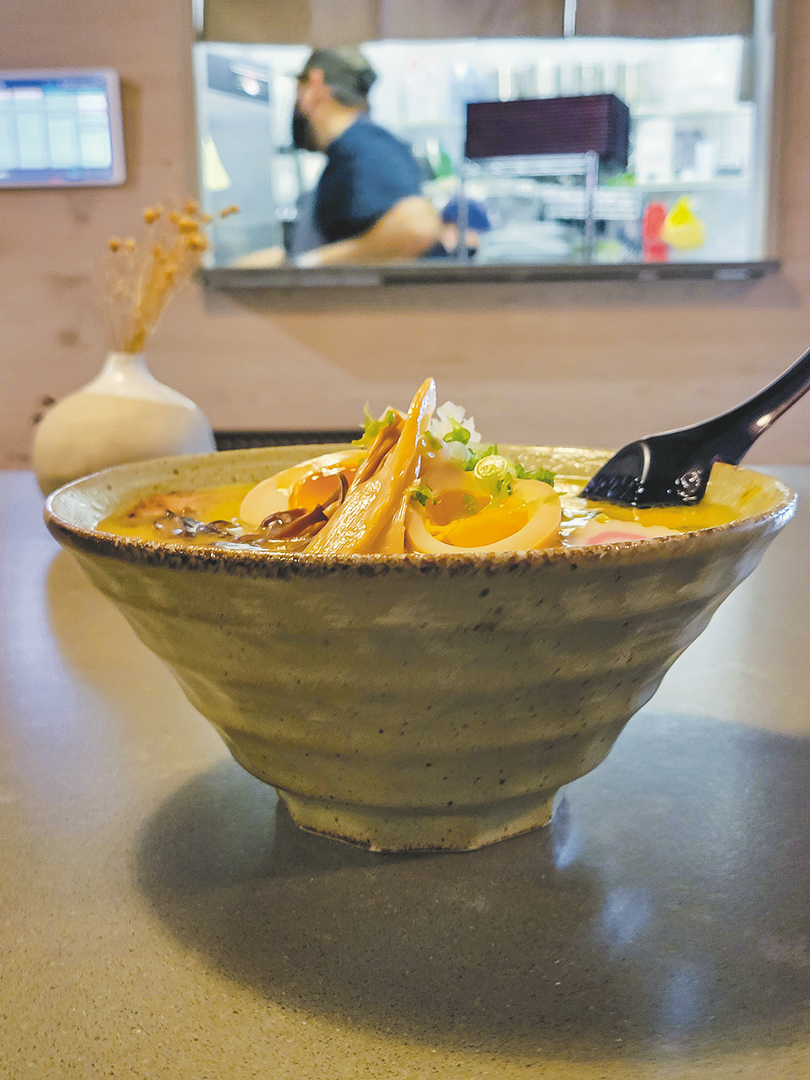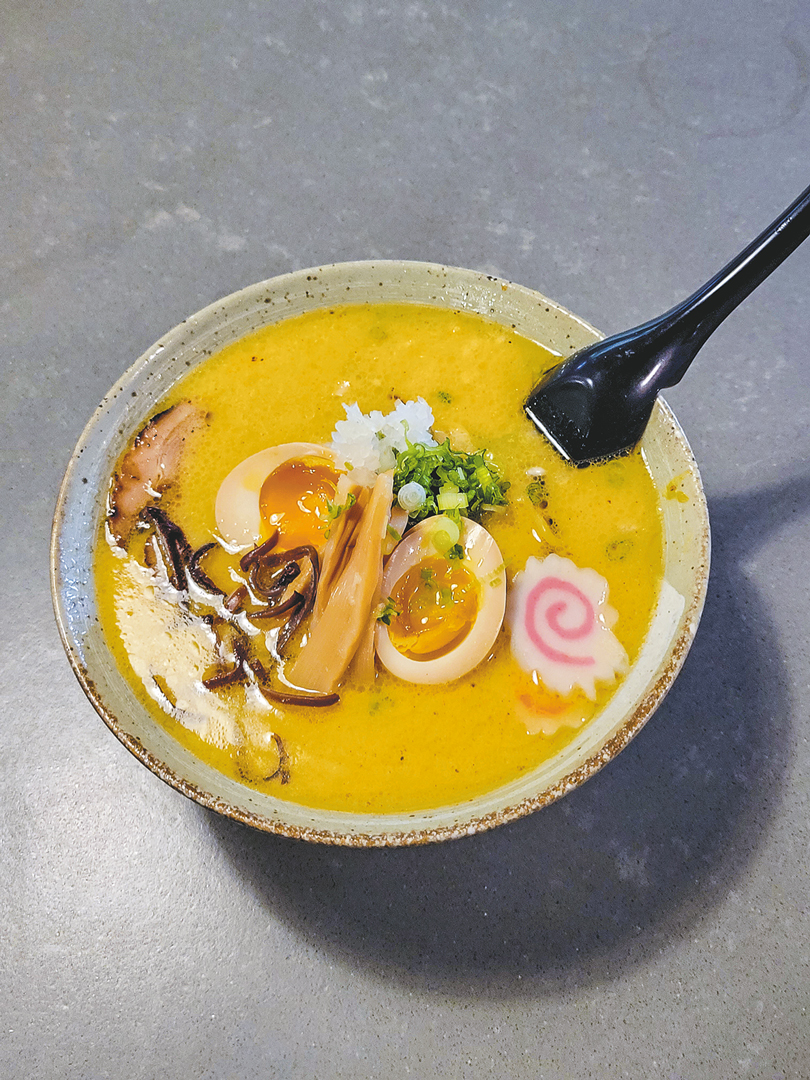
My Nisei grandmother, Sachiyeo Oyama, passed away just before I was born, but from my aunties and uncles, here is what I know. She was a tiny woman, standing five foot one with thick black hair and twinkling eyes shining out of her cat-eye glasses. She was quiet, and always sewing. She was also unbearably stoic about some of the heartaches she had experienced in her life. Soon after she and her family emerged from an internment camp, she fell in love with my tall Black grandfather and was promptly disowned by her Japanese family. Lastly, I know she was an incredibly creative cook, infusing the food of her Japanese upbringing with the financial realities of living in the Los Angeles projects with seven children. Even without ever having met her, I have lived my life making adaptations of Japanese cooking. If I’m visiting Albuquerque, I can find the thick and fleshy udon noodles that sit like hot promises of comfort on your plate and fill your mouth with the earthy flavor of fine wheat. There are gray, speckled buckwheat noodles, cold and tangy with rice vinegar. There are yakisoba dishes with bright-yellow tendrils slick with chili oil and soy sauce. And finally, there is ramen, luscious in shoyu or miso or milky tonkotsu broth, floating in a gorgeous steaming tangle until your chopsticks break it up. However, at home in Taos, I’ve often had to rely on the substitutions my father had learned from her. There were many mornings when my father took the spaghetti from the night before and fried it with gooey eggs and soy sauce for breakfast, calling it stir-fried yakisoba. There were countless pots of Maruchan instant ramen dressed up with eggs, sliced scallions, and whatever vegetables lurked on the edge of edibility in the fridge. These impromptu noodle dishes always filled me with a sense of warmth and comfort, and—“authenticity” be damned—they felt like a piece of my ancestral homeland.


Tonkotsu ramen bowl at Magokoro. Photos by Stephanie Cameron.
However, despite my experiences of the adaptability of Japanese noodle dishes, I can’t say I don’t still appreciate a steaming bowl of traditional ramen or soba made by a professional. For this reason, I took an old friend up on their recommendation to visit Magokoro Japanese Restaurant in Albuquerque for a ramen experience. I had had a hard month filled with COVID scares and deadlines, and I needed a little comfort. After a trip to Talin Market to stock up on packaged noodles for home, I cruised toward Menaul and Valencia. Discreetly lodged on a strip mall lineup, Magokoro possesses a simple takeout menu of perfected options. On the suggestion of the host, I ordered a tonkotsu ramen bowl. If it weren’t for my obligatory sharing with my toddler, who was yelling in the back seat, I might have chosen the green chile ramen option—another example of the adaptability of Japanese noodles. The kid and I then crouched in the back of my car watching the traffic move by on Menaul, too hungry to drive somewhere else. I tipped the plate of buttery-colored crimped noodles into the thick broth, which emitted a faint splash and rich aroma as the wholesome noodles touched the pork-bone soup base. Then I scraped the black mushrooms and perfectly jammy egg on top.
I dug in, winding noodles with chopsticks and slurping decadent broth; my toddler approached the meal with her hands, chewing noodles straight from her palms with a sort of unconscious enjoyment I envy. With the hatch-back of my dusty car open to the sunset on the glowing hills above the city and a few noodle fragments flecking my jeans from the toddler, I felt satisfied, culturally connected, and utterly grounded in the comfort and simplicity of the noodles in my belly and the familiar scent of soy sauce and broth. Maybe it was the feeling of finding bits of my ancestral home in my chosen home of New Mexico, but the casual meal was one of the most meaningful I’d had in a while. While Magokoro’s dish was certainly more traditional (and miles tastier) than the fried spaghetti yakisoba I still make in a pinch, I can’t necessarily say that one was more authentic than the other. Who is to say that the experience of New Mexico–made tonkotsu ramen is more Japanese than the Japanese American experience of anything-goes ramen? They both have their place in the story of noodles, the stories of migration and adaptation, and most importantly, the story of my family.
Note: Magokoro closed in December 2022.
Mariko O. Thomas
Mariko O. Thomasis an independent scholar, instructor, and writer living in Taos. She is interested in plant-human relationships, environmental justice, and storytelling.


